We recently covered the terrifying products of Germany’s secret Projekt 605 bioengineering research programme – the Schreckwulfen, Nachtjäger, and Nachtalben – and their impact on the Second World War. Although the Soviet Union was hampered in their early adoption of Rift-tech and forced to rely on more traditional technologies throughout 1944 and into 1945, Soviet leadership was keen to modernise wherever possible, and developed a sophisticated industrial espionage network to acquire as much new knowledge as they could. This would, in time, lead to a number of Rift-tech advancements of their own, some of which we’ve already examined. Today, it’s the turn of Aral, the Soviet bioengineering programme!
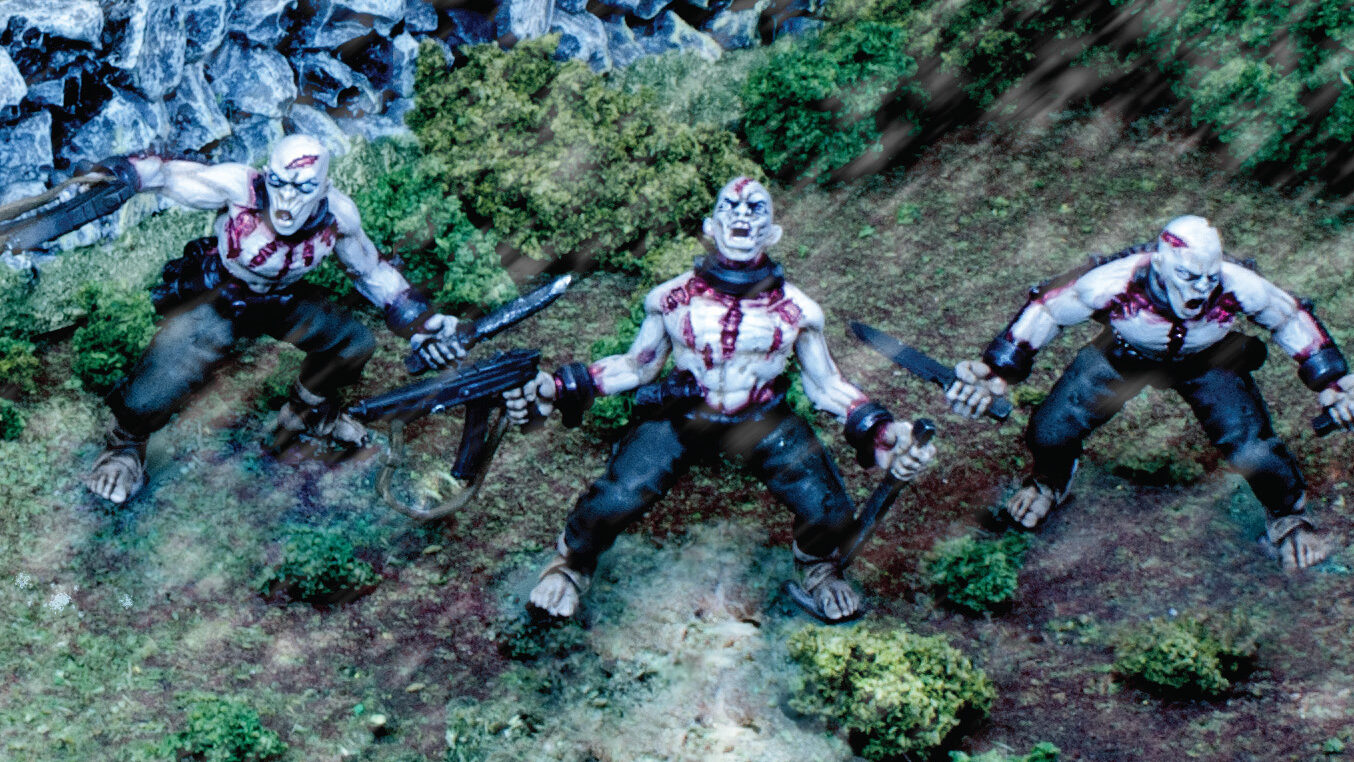
With the appearance of the monstrous German Schreckwulfen on the Eastern Front in the defence of Warsaw in 1945, Soviet soldiers found themselves confronted with an enemy to which they had few answers. Striking out of the darkness, they wrought havoc on the Soviet encirclement attempts, and the morale of the Red Army conscripts (already stretched thin by the savage fighting in Poland) was on the brink of collapse. Something had to be done to counter these beasts, and on Stalin’s personal order the Aral design bureau was founded. Comprising the Soviet Union’s finest geneticists, biologists, and surgeons (including several released from the Gulag system for this task) and headed by Anatoliy Siborenko, a brilliant but disgraced biochemist who had been jailed for illegal experimentation in the field of human ‘augmentation’ in the 1920s, the Aral team was given a simple task – create a monster capable of countering the Schreckwulfen menace.
Siberian Terrors
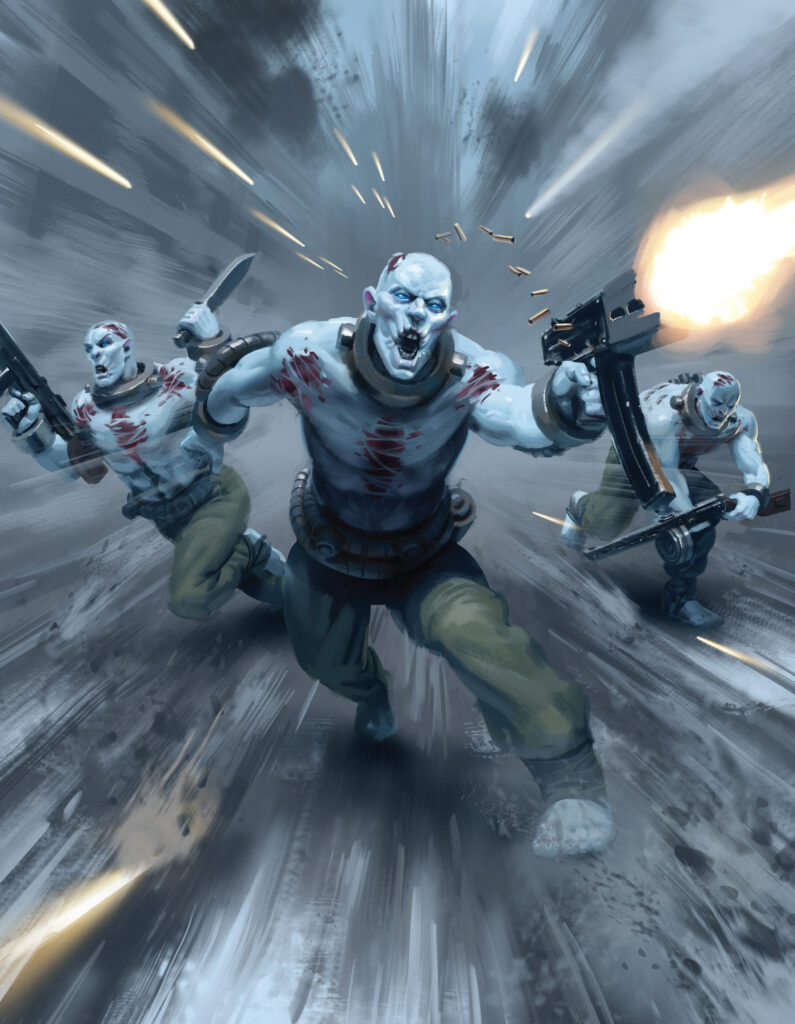
With no Rift in Soviet territory, Aral had their work cut out for them, but received an incredible stroke of luck in mid-1945, when Detlef Weber stumbled into a Soviet rifle regiment’s encampment on the outskirts of Warsaw. Weber had been one of the original Projekt 605 scientists, the German programme responsible for the Schreckwulfen, but had found himself as a rifleman on the Ostfront after an indiscretion involving the wife of a senior Party official in Germany. No soldier, Weber knew he would surely die in Warsaw, and instead resolved to save his life by defecting to the Soviets with his information. Immediately whisked to Moscow and integrated into the Aral team, Weber’s experience and knowledge vastly accelerated the project, and led to the deployment of the first Soviet combat-viable creation in the bitterly cold December of 1945 – the Siberian Terrors.
Using Weber’s knowledge of the limitations of Schreckwulfen, as well as information supplied by Soviet spies, the Aral bureau had set out to create soldiers that were capable of hunting the canine hybrids in the brooding forests of Poland. To do this, they would need to be impervious to the cold, enabling them to lay in ambush for hours or track their foes through the snow, as well as fully tactically cognisant, and vicious close-quarters fighters. What was created in the Aral laboratories fulfilled these criteria, but strayed further from humanity than had originally been anticipated. The product of a ruthless, oft-unethical development programme, the Terrors had once been prisoners, whose blood had been replaced with a circulatory fluid based on vehicular anti-freeze, and whose nervous system had been heavily truncated, vastly reducing their pain reflex. Driven all but mad by the agonising process, they had been indoctrinated into utterly loyal soldiers by a combination of drugs and hypnosis, and other more subtle alterations had been made to the fibres of their muscles, allowing them to move at great speeds for long periods of time. An unexpected side effect of the blood replacement was the lowering of the body temperature to levels where the Terrors could inflict localised frostbite on a person simply by touching their exposed skin, which was considered a welcome bonus in close combat, if something of a handicap to normal everyday life!
Capable of going toe-to-toe with isolated Schreckwulfen or acting as deep penetration saboteurs, the Terrors made their combat debut as the Soviet armies pushed towards Budapest, carving a bloody niche as tools of psychological warfare. Terrified German troops refused to sleep at night, remaining on high alert, which enormously hampered the effectiveness of their defences by day, and hardened SS Panzergrenadier units had to be deployed in the static defences to replace them, nullifying their abilities as mobile reaction forces. While just as vulnerable to bombs or bullets as normal men, the Siberian Terrors at last gave the Soviets a viable weapon of their own to impact the morale of German forces, and counter the Schreckwulfen.
On the Table: Siberian Terrors are just that – terrors! Fast Veteran infantry packing SMGs is always a recipe for nastiness on the tabletop, and when you add in Fanatics they become a serious threat in close combat – get stuck in and watch enemy units melt away! If that wasn’t enough, the traditional counter to big scary squads, Flamethrowers, simply have no effect on them – the anti-freeze in their blood keeps them nice and cool!
Ursus Infantry
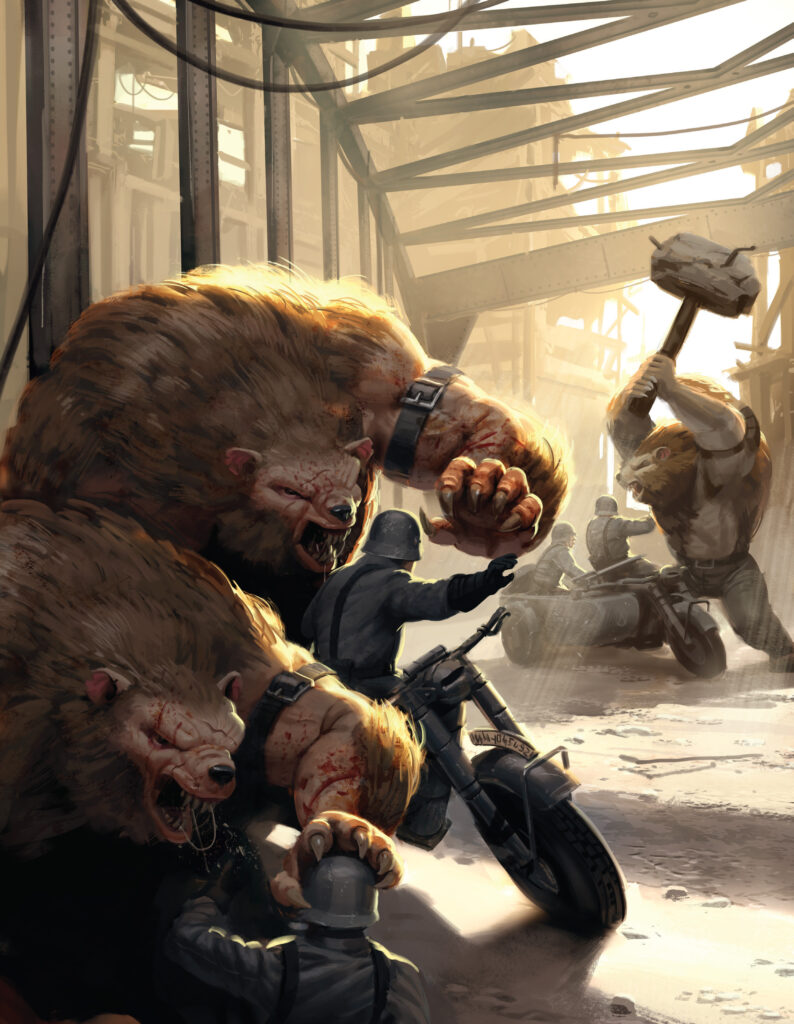
While the Siberian Terrors were an effective weapon on the battlefield, the widespread introduction of the German Nachtjäger on the Eastern Front necessitated the development of similarly ‘heavy’ units to counter them. Ironically, Weber, Siborenko, and the Aral team would take significant inspiration from the earlier Schreckwulfen concept for this, but approached it with a different philosophy. Instead of powerful hunters, they wanted sheer brutes capable of going toe-to-toe with the worst abominations of Projekt 605. Combining human and ursine DNA, they created what would become known as Homo Sapiens Ursus, more often referred to as simply ‘Ursus’.
These eight-foot-tall man-bear hybrids were a triumph for Aral, building on Weber’s previous research, and were in widespread service by April 1946. An unsubtle weapon, they would be kept chained until needed, then goaded forward to the front lines and pointed towards the enemy. Once unleashed they proved almost unstoppable, ploughing forwards in an avalanche of muscle and fur, laying waste to everything before them. Considered broadly expendable, follow-up troops were simply ordered to exploit the carnage the bears caused rather than try and support them, and the combat life expectancy of Ursus infantry was short, but the Aral laboratories had an almost endless supply of ‘willing’ volunteers and the sheer quantity of Ursus available had a quality all of its own! More than able to counter the Nachtjäger if they were able to catch them on the ground, they provided a much-needed morale boost to Soviet troops, and could be found wherever a breakthrough was most desperately needed.
On the Table: Much like their canine cousins in German service, Ursus infantry are proper monsters on the tabletop, packing Resilient, Tough, and Strong alongside Tooth and Claw for close-quarters devastation, as well as Horror for that all-important Morale disruption. A pack of five in a truck is a sure-fire way to spoil anyone’s day while a ‘baseline’ unit or two of three bears costs only 66 points each, and can punch well above their weight if they can get to grips with the foe.
If the Germans are going to play dirty with nightmares from the depths of Lovecraftian laboratories, you’ll need to respond in kind! Get your Siberian Terrors and Ursus Infantry to the front lines, ASAP!
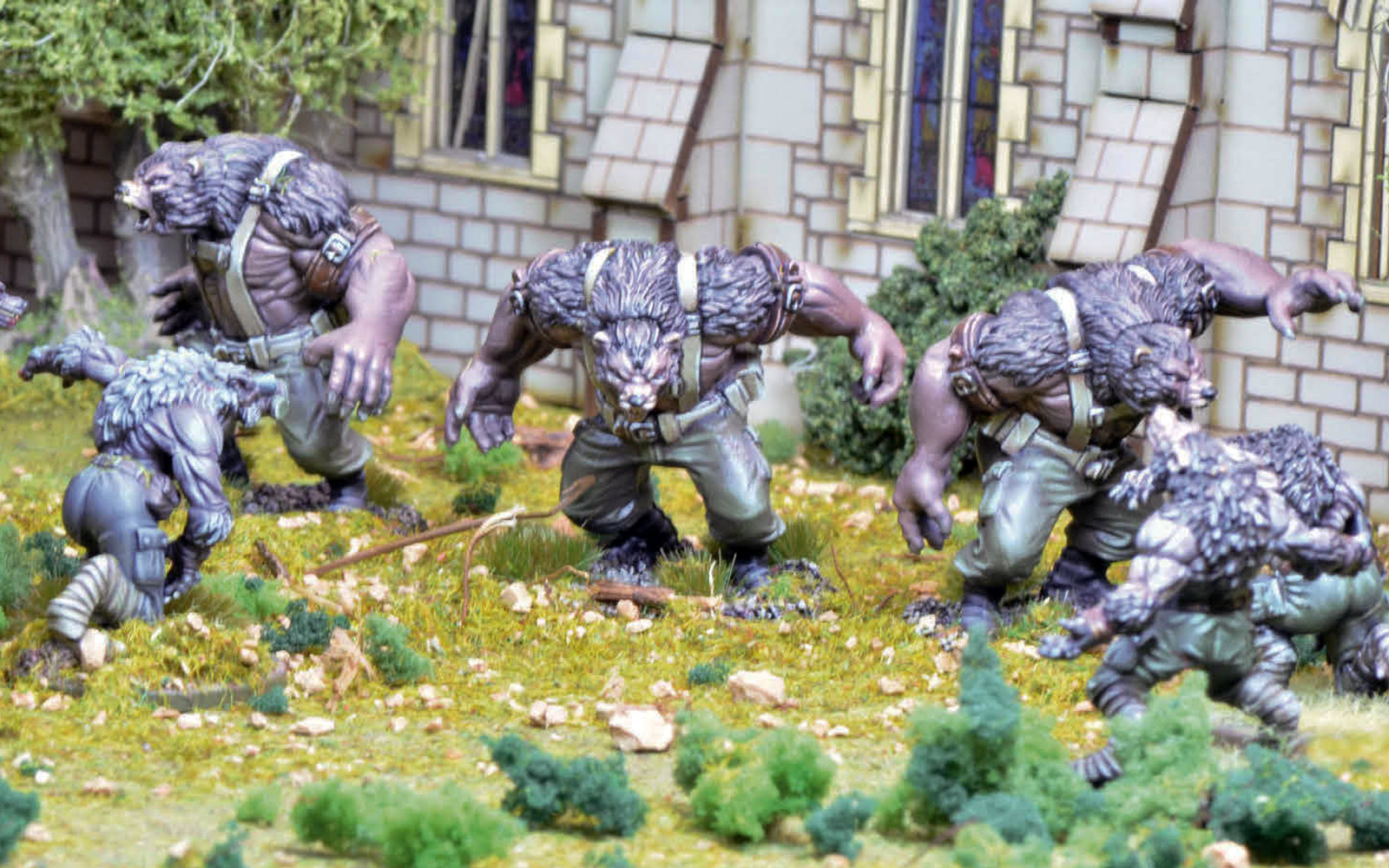
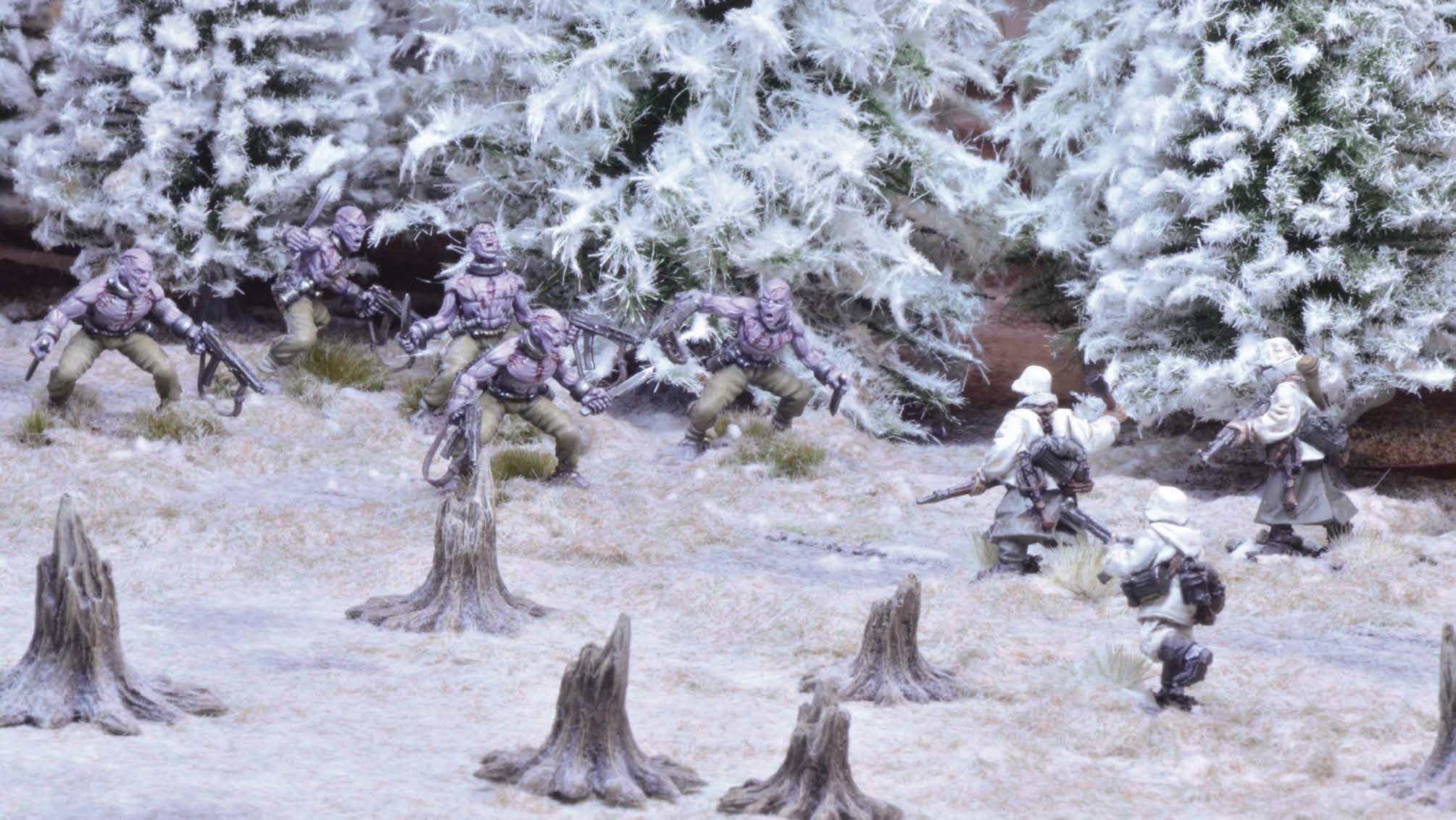

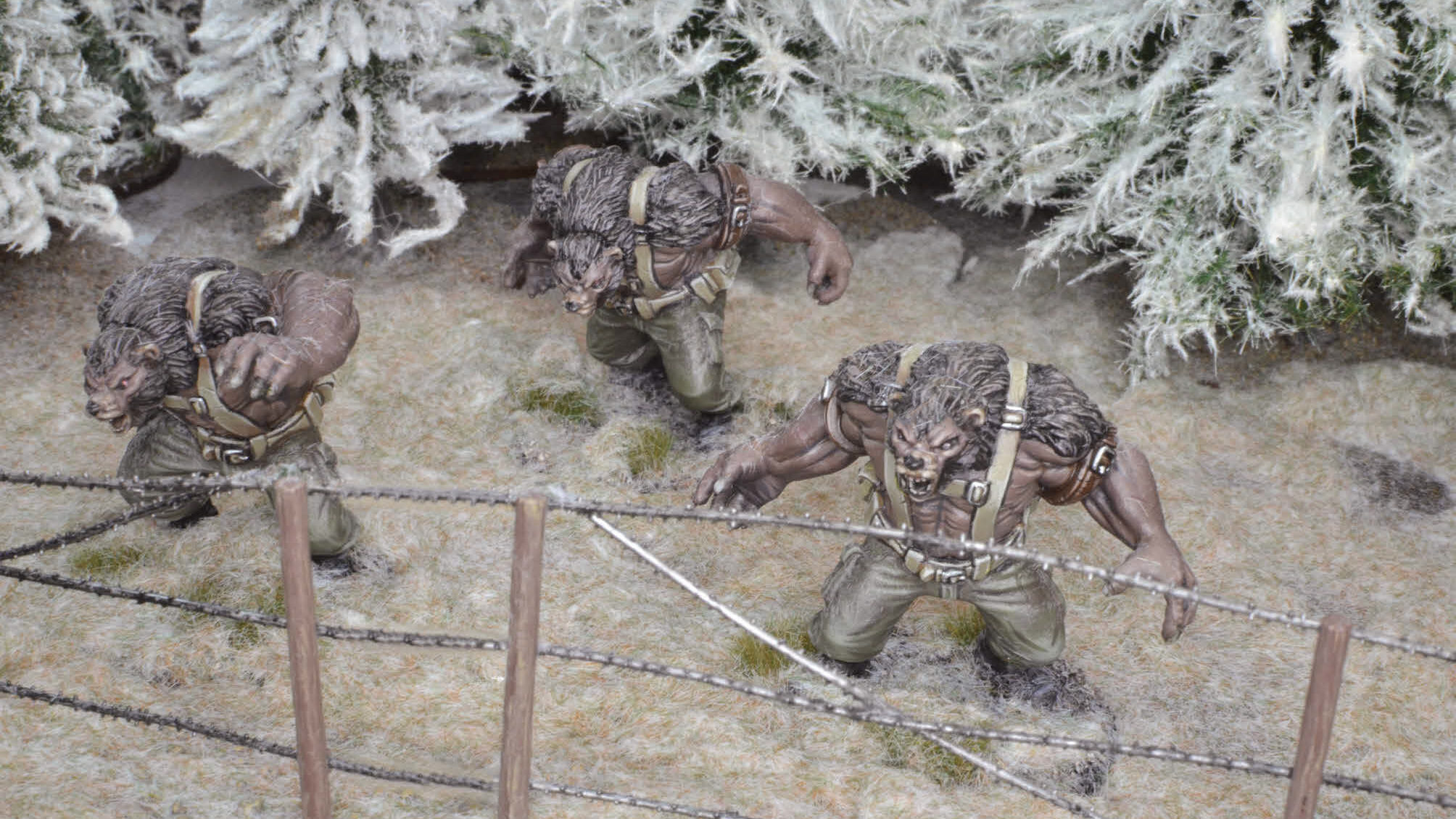
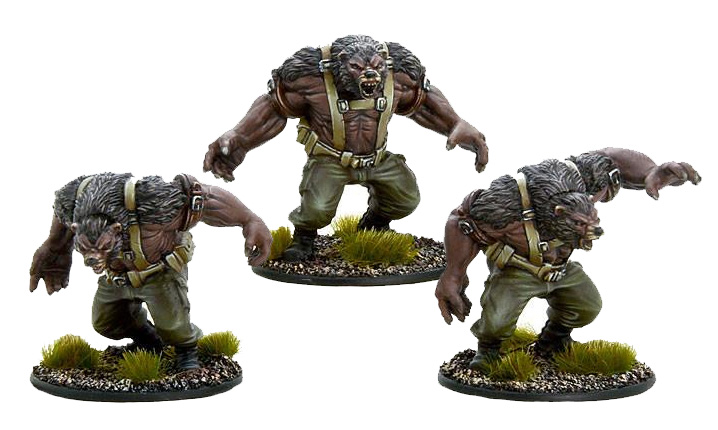
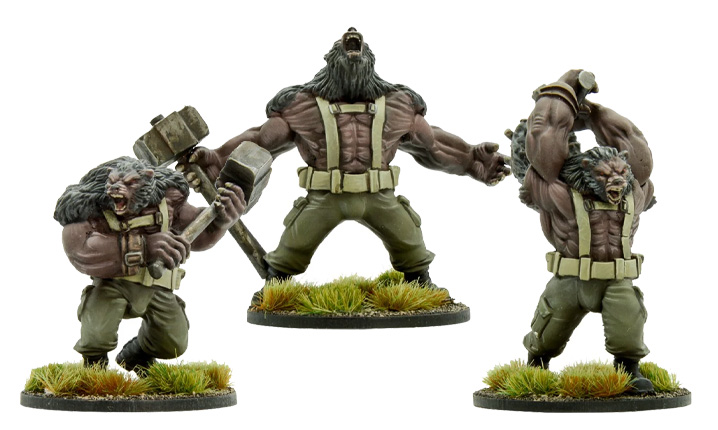
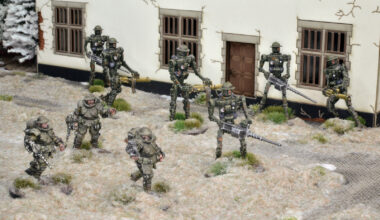

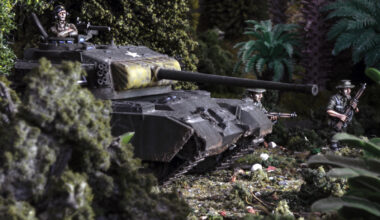
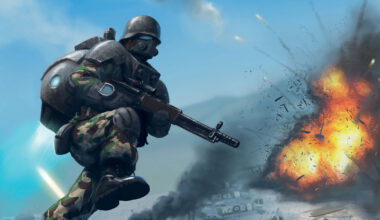
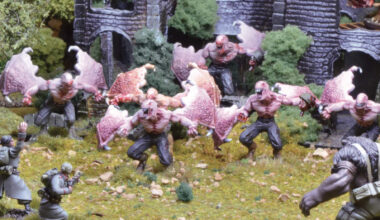
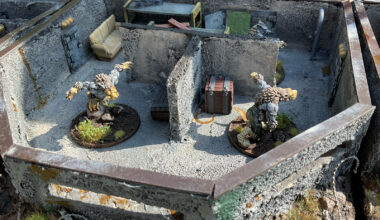
1 comment
Ursus infantry are tough opponents. Their only weakness is that they’re Regulars. I’ve had success using panzerschrecks and heavy autocannons on them….
L.T. Russell
Comments are closed.